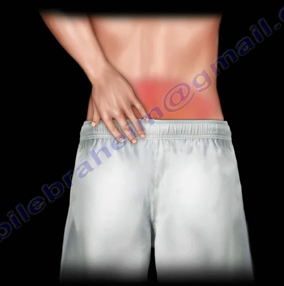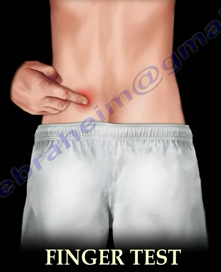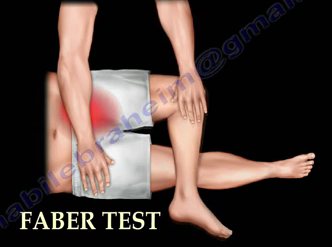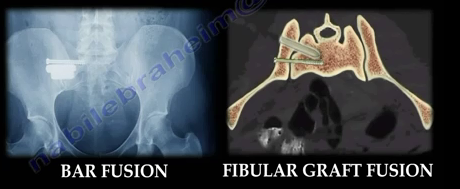Low back pain is very common and often the the sacroiliac joint is source of that pain. However pain originating from SI joint is usually unappreciated, underdiagnosed, misunderstood and usually contributes to other sources such as in the hip and spine.
Patients experiencing low back pain can spend months or even years in treatment without the correct diagnosis.
Diagnostic injection of the sacroiliac joint is the only means to confirm diagnosis. Pain from the hips, spine and SI joint can overlap and be associated. Patients can experience injuries associated with the spine and SI joint or the hip and SI joint. If the patient has a back sprain and it doesn't improve for several months, it is important to look at the SI joints.
The SI joints are weight bearing joints. These joints distribute weight from the spine to the lower extremities through the hip joints.
From the front, the sacroiliac joint is supported by the anterior sacroiliac ligaments. There are also strong muscles in the front of the sacroiliac joint. Important nerves of the thigh and leg pass in front of the SI joints.
From the back, the SI joint has strong posterior sacroiliac ligaments. The sciatic nerve crosses underneath the piriformis muscle. All of this is covered by strong back and gluteal muscles.
Symptoms of Sacroiliac Joint Dysfunction:
Symptoms include pain in the lower back, buttock, back of the thigh and knee. Other symptoms include occasional groin pain, difficulty and discomfort while sitting and the patient will frequently change position to become comfortable.
All clinical examination tests used to determine the presence of SI joint pain are not specific. The finger test is helpful in determining SI joint pain. Patients usually point with one finger to one side toward the painful sacroiliac joint. If the patient points to the exact area of pain each time, the pain is likely coming from the SI joint.
The Faber test is helpful in determining the presence of SI joint problems. The purpose of this test is to stretch the SI joint in order to reproduce pain. Press down gently but firmly on the flexed knee and the opposite anterior superior iliac crest. Pain in the sacroiliac area indicates that there is a problem with the sacroiliac joints. The Straight Leg test is used to determine whether a patient with low back pain has an underlying herniated disc. This test is not used to determine the presence of SI joint pain.
Differential Diagnosis:
Differential diagnosis of SI joint pain includes trochanteric bursitis, piriformis syndrome, myofascial pain, lumbosacral disc herniation and bulge, lumbosacral facet syndrome, lumbar radiculopathy and cluneal nerve entrapment.
Causes of Sacroiliac Joint Pain:
Causes include leg length discrepancy, mechanical dysfunction, SI joint infection, ankylosing spondylitis, crystal arthropathy, pyogenic arthropathy, post-spinal fusion and stress fractures of the sacrum. Usually the SI joint allows for minimal movement however, excessive or abnormal movement causes dysfunction of the joint, instability and pain. An SI joint infection can sometimes be occult or hard to diagnose. To identify Ankylosing spondylitis, a blood test is needed to identify the presence of the HLA-B27 protein.
Treatment of SI Joint Pain:
Anti-inflammatory medications can be taken at a prescribed period of time. But short term use is recommended as continued use can have adverse effects on the kidneys and stomach. Physical therapy, manipulation, massage, yoga, exercise and acupuncture each have effective roles in treatment. Treatment is idiosyncratic in nature. One method may work for you, but may not work for your neighbor. SI joint injections can be diagnostic or therapeutic through the use of steroid injections. Radiofrequency ablation (RFA) uses radio waves to produce heat directed at a specific nerve. The nerves generating the pain are relieved by this procedure. Stabilization or fusion of the SI joint is the last resort for treatment of SI joint pain.
For more videos on the Sacroiliac Joint, check the links below:
For more videos, visit my YouTube page at the link below:
https://www.youtube.com/user/nabilebraheim



